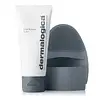What's inside
What's inside
 Key Ingredients
Key Ingredients

 Benefits
Benefits

 Concerns
Concerns

 Ingredients Side-by-side
Ingredients Side-by-side

Caprylic/Capric Triglyceride
MaskingC12-15 Alkyl Benzoate
AntimicrobialLaureth-4
EmulsifyingHydrogenated Vegetable Oil
EmollientOzokerite
Emulsion StabilisingBis-Stearyl Dimethicone
EmollientGlyceryl Behenate
EmollientTribehenin
EmollientStearyl Stearate
EmollientStearic Acid
CleansingPhospholipids
Skin ConditioningPrunus Armeniaca Kernel Oil
MaskingGlycine Soja Oil
EmollientLavandula Angustifolia Oil
MaskingCitrus Aurantium Dulcis Oil
MaskingCitrus Grandis Peel Oil
MaskingCitrus Nobilis Peel Oil
MaskingCymbopogon Schoenanthus Oil
MaskingLavandula Hybrida Oil
EmollientGlycol Distearate
EmollientSorbitol/Sebacic Acid Copolymer Behenate
Skin ConditioningTocopherol
AntioxidantGlycolipids
Skin ConditioningEucalyptus Staigeriana Branch/Leaf Oil
MaskingGlycine Soja Sterols
EmollientLinalool
PerfumingCitral
PerfumingLimonene
PerfumingPhenoxyethanol
PreservativeCaprylic/Capric Triglyceride, C12-15 Alkyl Benzoate, Laureth-4, Hydrogenated Vegetable Oil, Ozokerite, Bis-Stearyl Dimethicone, Glyceryl Behenate, Tribehenin, Stearyl Stearate, Stearic Acid, Phospholipids, Prunus Armeniaca Kernel Oil, Glycine Soja Oil, Lavandula Angustifolia Oil, Citrus Aurantium Dulcis Oil, Citrus Grandis Peel Oil, Citrus Nobilis Peel Oil, Cymbopogon Schoenanthus Oil, Lavandula Hybrida Oil, Glycol Distearate, Sorbitol/Sebacic Acid Copolymer Behenate, Tocopherol, Glycolipids, Eucalyptus Staigeriana Branch/Leaf Oil, Glycine Soja Sterols, Linalool, Citral, Limonene, Phenoxyethanol
Alternatives
Ingredients Explained
These ingredients are found in both products.
Ingredients higher up in an ingredient list are typically present in a larger amount.
C12-15 Alkyl Benzoate is made up of Benzoic Acid and long chain alcohols. It has a low molecular weight.
C12-15 Alkyl Benzoate is an emollient and texture enhancer. Due to its solubility, it is often used in sunscreens to help evenly distribute active ingredients.
As an emollient, C12-15 Alkyl Benzoate helps soften and hydrate your skin. Emollients create a film on your skin that traps moisture within.
This ingredient has been reported to cause eye irritation.
Learn more about C12-15 Alkyl BenzoateThis ingredient is an emollient, solvent, and texture enhancer. It is considered a skin-softener by helping the skin prevent moisture loss.
It helps thicken a product's formula and makes it easier to spread by dissolving clumping compounds.
Caprylic Triglyceride is made by combining glycerin with coconut oil, forming a clear liquid.
While there is an assumption Caprylic Triglyceride can clog pores due to it being derived from coconut oil, there is no research supporting this.
Learn more about Caprylic/Capric TriglyceridePhenoxyethanol is a preservative that has germicide, antimicrobial, and aromatic properties. Studies show that phenoxyethanol can prevent microbial growth. By itself, it has a scent that is similar to that of a rose.
It's often used in formulations along with Caprylyl Glycol to preserve the shelf life of products.
Tocopherol (also known as Vitamin E) is a common antioxidant used to help protect the skin from free-radicals and strengthen the skin barrier. It's also fat soluble - this means our skin is great at absorbing it.
Vitamin E also helps keep your natural skin lipids healthy. Your lipid skin barrier naturally consists of lipids, ceramides, and fatty acids. Vitamin E offers extra protection for your skin’s lipid barrier, keeping your skin healthy and nourished.
Another benefit is a bit of UV protection. Vitamin E helps reduce the damage caused by UVB rays. (It should not replace your sunscreen). Combining it with Vitamin C can decrease sunburned cells and hyperpigmentation after UV exposure.
You might have noticed Vitamin E + C often paired together. This is because it is great at stabilizing Vitamin C. Using the two together helps increase the effectiveness of both ingredients.
There are often claims that Vitamin E can reduce/prevent scarring, but these claims haven't been confirmed by scientific research.
Learn more about Tocopherol